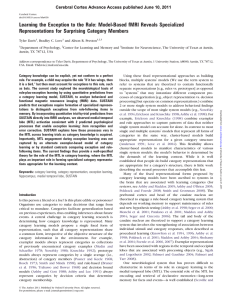High Resolution Functional MR Imaging of Material-Specific Encoding
advertisement
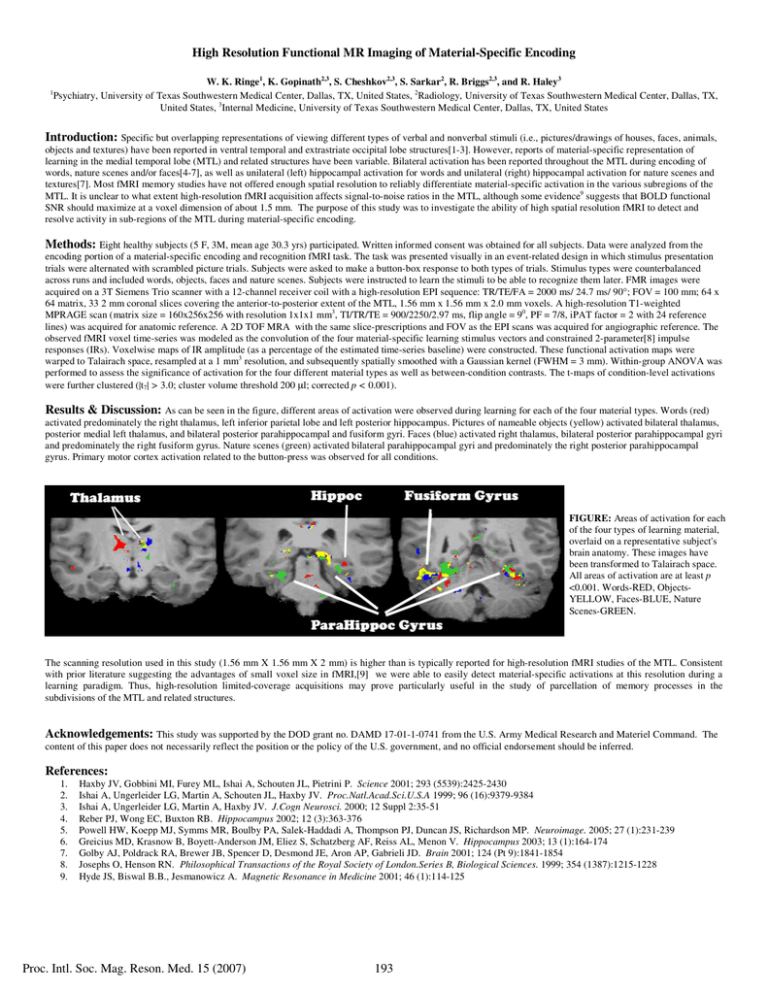
High Resolution Functional MR Imaging of Material-Specific Encoding W. K. Ringe1, K. Gopinath2,3, S. Cheshkov2,3, S. Sarkar2, R. Briggs2,3, and R. Haley3 Psychiatry, University of Texas Southwestern Medical Center, Dallas, TX, United States, 2Radiology, University of Texas Southwestern Medical Center, Dallas, TX, United States, 3Internal Medicine, University of Texas Southwestern Medical Center, Dallas, TX, United States 1 Introduction: Specific but overlapping representations of viewing different types of verbal and nonverbal stimuli (i.e., pictures/drawings of houses, faces, animals, objects and textures) have been reported in ventral temporal and extrastriate occipital lobe structures[1-3]. However, reports of material-specific representation of learning in the medial temporal lobe (MTL) and related structures have been variable. Bilateral activation has been reported throughout the MTL during encoding of words, nature scenes and/or faces[4-7], as well as unilateral (left) hippocampal activation for words and unilateral (right) hippocampal activation for nature scenes and textures[7]. Most fMRI memory studies have not offered enough spatial resolution to reliably differentiate material-specific activation in the various subregions of the MTL. It is unclear to what extent high-resolution fMRI acquisition affects signal-to-noise ratios in the MTL, although some evidence9 suggests that BOLD functional SNR should maximize at a voxel dimension of about 1.5 mm. The purpose of this study was to investigate the ability of high spatial resolution fMRI to detect and resolve activity in sub-regions of the MTL during material-specific encoding. Methods: Eight healthy subjects (5 F, 3M, mean age 30.3 yrs) participated. Written informed consent was obtained for all subjects. Data were analyzed from the encoding portion of a material-specific encoding and recognition fMRI task. The task was presented visually in an event-related design in which stimulus presentation trials were alternated with scrambled picture trials. Subjects were asked to make a button-box response to both types of trials. Stimulus types were counterbalanced across runs and included words, objects, faces and nature scenes. Subjects were instructed to learn the stimuli to be able to recognize them later. FMR images were acquired on a 3T Siemens Trio scanner with a 12-channel receiver coil with a high-resolution EPI sequence: TR/TE/FA = 2000 ms/ 24.7 ms/ 90°; FOV = 100 mm; 64 x 64 matrix, 33 2 mm coronal slices covering the anterior-to-posterior extent of the MTL, 1.56 mm x 1.56 mm x 2.0 mm voxels. A high-resolution T1-weighted MPRAGE scan (matrix size = 160x256x256 with resolution 1x1x1 mm3, TI/TR/TE = 900/2250/2.97 ms, flip angle = 90, PF = 7/8, iPAT factor = 2 with 24 reference lines) was acquired for anatomic reference. A 2D TOF MRA with the same slice-prescriptions and FOV as the EPI scans was acquired for angiographic reference. The observed fMRI voxel time-series was modeled as the convolution of the four material-specific learning stimulus vectors and constrained 2-parameter[8] impulse responses (IRs). Voxelwise maps of IR amplitude (as a percentage of the estimated time-series baseline) were constructed. These functional activation maps were warped to Talairach space, resampled at a 1 mm3 resolution, and subsequently spatially smoothed with a Gaussian kernel (FWHM = 3 mm). Within-group ANOVA was performed to assess the significance of activation for the four different material types as well as between-condition contrasts. The t-maps of condition-level activations were further clustered (|t7| > 3.0; cluster volume threshold 200 µl; corrected p < 0.001). Results & Discussion: As can be seen in the figure, different areas of activation were observed during learning for each of the four material types. Words (red) activated predominately the right thalamus, left inferior parietal lobe and left posterior hippocampus. Pictures of nameable objects (yellow) activated bilateral thalamus, posterior medial left thalamus, and bilateral posterior parahippocampal and fusiform gyri. Faces (blue) activated right thalamus, bilateral posterior parahippocampal gyri and predominately the right fusiform gyrus. Nature scenes (green) activated bilateral parahippocampal gyri and predominately the right posterior parahippocampal gyrus. Primary motor cortex activation related to the button-press was observed for all conditions. FIGURE: Areas of activation for each of the four types of learning material, overlaid on a representative subject's brain anatomy. These images have been transformed to Talairach space. All areas of activation are at least p <0.001. Words-RED, ObjectsYELLOW, Faces-BLUE, Nature Scenes-GREEN. RL The scanning resolution used in this study (1.56 mm X 1.56 mm X 2 mm) is higher than is typically reported for high-resolution fMRI studies of the MTL. Consistent with prior literature suggesting the advantages of small voxel size in fMRI,[9] we were able to easily detect material-specific activations at this resolution during a learning paradigm. Thus, high-resolution limited-coverage acquisitions may prove particularly useful in the study of parcellation of memory processes in the subdivisions of the MTL and related structures. Acknowledgements: This study was supported by the DOD grant no. DAMD 17-01-1-0741 from the U.S. Army Medical Research and Materiel Command. content of this paper does not necessarily reflect the position or the policy of the U.S. government, and no official endorsement should be inferred. References: 1. 2. 3. 4. 5. 6. 7. 8. 9. Haxby JV, Gobbini MI, Furey ML, Ishai A, Schouten JL, Pietrini P. Science 2001; 293 (5539):2425-2430 Ishai A, Ungerleider LG, Martin A, Schouten JL, Haxby JV. Proc.Natl.Acad.Sci.U.S.A 1999; 96 (16):9379-9384 Ishai A, Ungerleider LG, Martin A, Haxby JV. J.Cogn Neurosci. 2000; 12 Suppl 2:35-51 Reber PJ, Wong EC, Buxton RB. Hippocampus 2002; 12 (3):363-376 Powell HW, Koepp MJ, Symms MR, Boulby PA, Salek-Haddadi A, Thompson PJ, Duncan JS, Richardson MP. Neuroimage. 2005; 27 (1):231-239 Greicius MD, Krasnow B, Boyett-Anderson JM, Eliez S, Schatzberg AF, Reiss AL, Menon V. Hippocampus 2003; 13 (1):164-174 Golby AJ, Poldrack RA, Brewer JB, Spencer D, Desmond JE, Aron AP, Gabrieli JD. Brain 2001; 124 (Pt 9):1841-1854 Josephs O, Henson RN. Philosophical Transactions of the Royal Society of London.Series B, Biological Sciences. 1999; 354 (1387):1215-1228 Hyde JS, Biswal B.B., Jesmanowicz A. Magnetic Resonance in Medicine 2001; 46 (1):114-125 Proc. Intl. Soc. Mag. Reson. Med. 15 (2007) 193 The

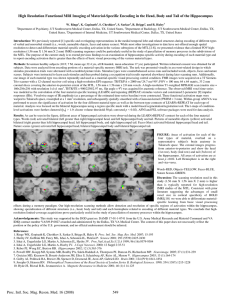
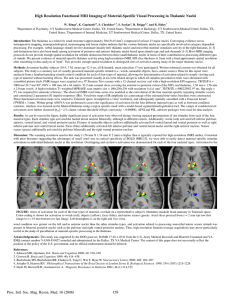

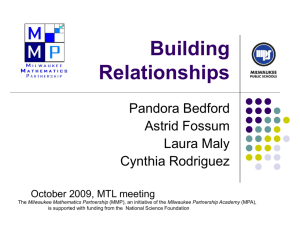
![Functional brain mapping of actual car-driving using [18F]FDG-PET](http://s3.studylib.net/store/data/008825166_1-520c765d189fcb1e600756a229ea56bc-300x300.png)
